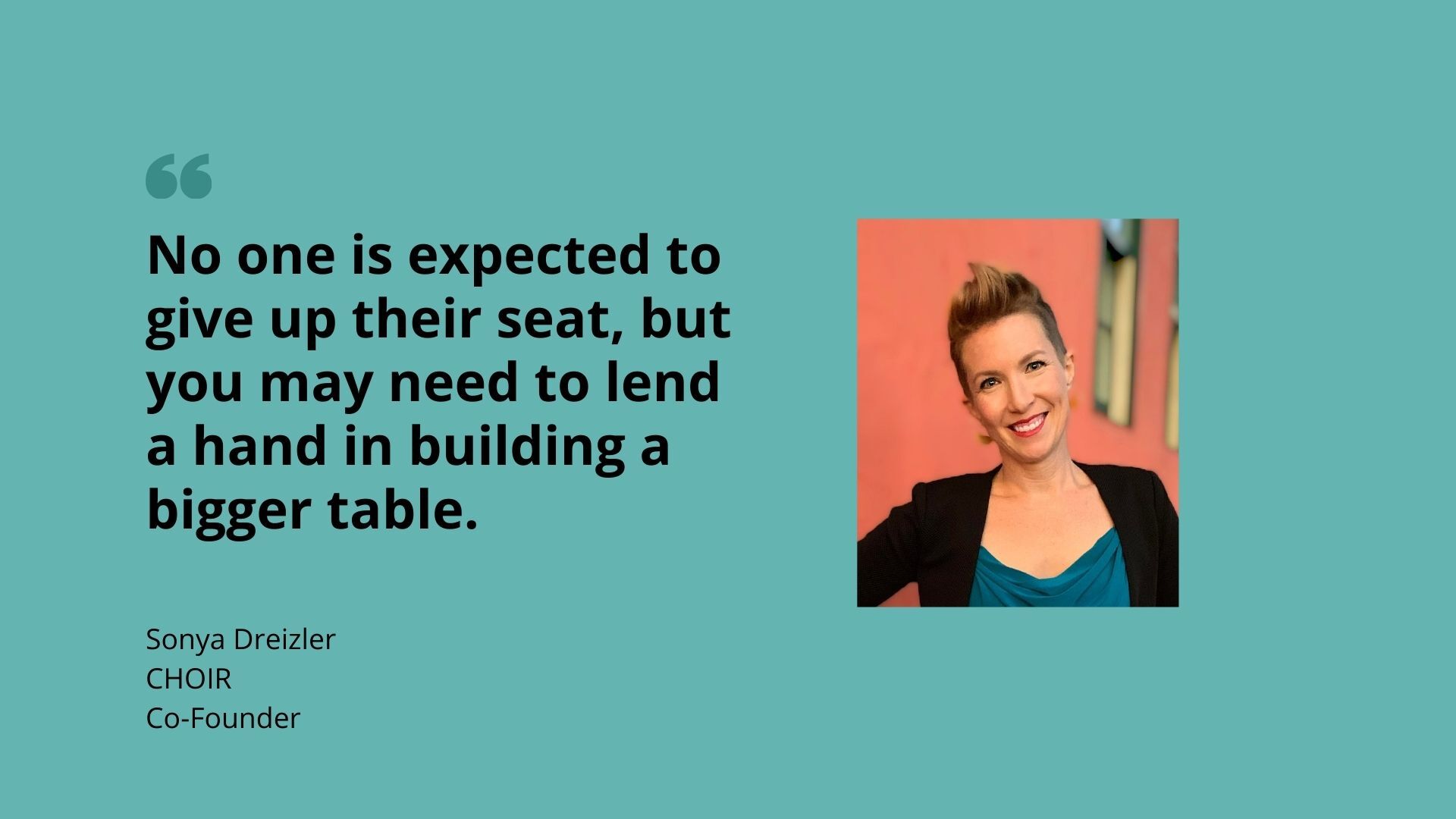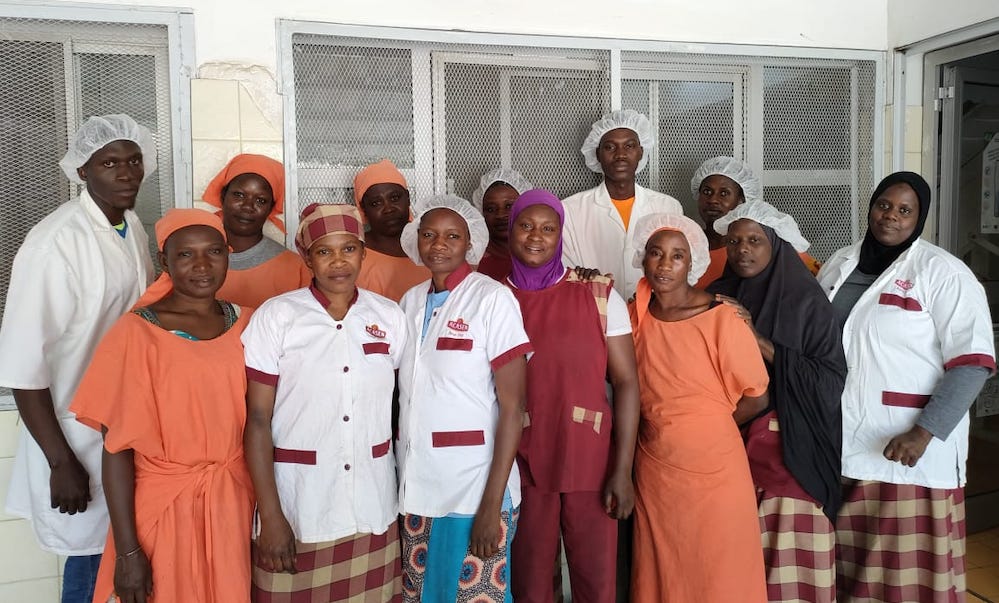ImpactAlpha, September 26 – Gender-lens investing is no longer a niche or little-known strategy. Still, too little capital is making it into the hands of women entrepreneurs and business owners in emerging markets. There are still too few female capital allocators, board members and business executives.
One way to overcome such obstacles: band together to strengthen the value case for investing in women, and for why institutional capital should rally behind them.
Five female fund managers in South Africa exemplify the range of tools gender-lens funds are deploying, from local market knowledge, to creative partnerships, to flexible, founder-friendly forms of capital.
“The gender-lens market is deepening, but also widening,” says Julia Price of Linea Capital Partners. “We’re seeing a lot of collaboration between women-led funds and angel investors, which is developing the value chain.”
Linea provides non-dilutive financing to help women founders retain equity in their businesses. The fund provided bridge financing Johannesburg-based SweepSouth, a gig-booking site for domestic cleaners, to support the female-led company ahead of its Series B equity round. Linea is now participating in the round, providing more non-dilutive financing from roughly 50 women angel investors.
Price is part of a growing cohort of first-time fund managers who are ushering in more capital and addressing persistent capital gaps for women in business. Their early track records aim to help break down barriers women-led and gender-lens funds face in raising eight- and nine-figure funds that could truly shift the marketplace.
- Lelemba Phiri of Africa Trust Group is tapping her experience as a female entrepreneur to build the pipeline of women-led startups. By partnering with other female-fund managers on deals, she’s also building the next generation of gender-lens funds to support female founders.
- Maya Burney’s Womvest is leveraging women’s angel networks to deploy impact-linked debt that is shifting businesses’ practices to be more women-centric. Seja Kekana’s Makoti Kekana Capital is finding and unlocking local tech talent to meet the pressing needs of South African industry.
- Hema Vallabh of Five35 Ventures, an early-stage equity fund, says entrepreneurs are increasingly demanding women investors on their cap tables, because they value the different experiences and perspectives women bring. In turn, gender-lens funds like Five35 are getting the benefit of preferential terms.
Funding female fund managers
Lelemba Phiri first noticed there was a problem with the lack of women business leaders as a fintech executive. Analyzing business performance, she spotted differences between how the male and female field agents of her company, Zoona, ran their businesses. “What started as a qualitative observation came back in the data for our organization and the growth we were seeing,” she recalls. The female agents were creating more meaningful connections in their communities, and accelerating Zoona’s growth.
Phiri’s observation changed the business. She then pushed to change Zoona’s recruitment process to get more women working alongside her in management. By the time Phiri left the company, it had shifted from 10% female managers to 55%.
Phiri launched Africa Trust Group, a venture fund, to help more women start at the top. The firm has raised $10 million to invest in seed-stage female entrepreneurs with checks of $200,000 up to $1 million. Africa Trust Group also runs a $300,000 pre-seed fund, backed by the Shell Foundation, which Phiri launched to build the venture fund’s pipeline and also to experiment with different types of capital entrepreneurs might need. “The type of instruments matter because they’ll impact the business’ unit economics, particularly for smaller, riskier businesses,” she explains.
The goal, she says, is to ensure that more women-led businesses make it to seed stage, and are then on track to raise growth-stage capital. “The drop-off of women entrepreneurs between the seed and Series A stages is massive,” observes Phiri. This is partly because female entrepreneurs’ key investors are themselves early-stage. The ecosystem needs to be thinking more about exits for their portfolio companies, Phiri argues. “We need to pre-think how we’re going to do that, and who are the other investors in the ecosystem who will come on board at the next stage.”
Consequently, Africa Trust Group’s is helping to build the next generation of female fund managers. “With a $10 million fund, the unit economics of a typical 2/20 model don’t work. So we’ve had to be creative with how we manage that piece,” she says. Africa Trust Group partners with other first-time female fund managers to source deals, and then pays them a commission when it closes an investment. “It’s a pay-for-results model that helps them build their track records and creates external [due diligence] capacity for us that we don’t have to pay for upfront.”
Gender-lens impact incentives
Maya Burney launched Womvest in 2020 to establish a network of women angel investors to support small and growing businesses. Its tool: low-cost, unsecured working capital. The catch: to get preferential rates, business owners have to commit to better employing, training and serving women.
“The way we think about gender-lens investing is not only to invest in women. It’s to change how everyone thinks about employing and working with women,” says Burney. “We’re interested in figuring out how we can use capital to incentivize the right things.”
That thesis shows up not only in Womvest’s portfolio but in how it deploys capital. Last year, the network launched a three million rand (about $170,000) pilot fund with investment firm Secha Capital, a male-led fund with a large number of female founders, workers and customers in its portfolio. Womvest’s short-term, impact-linked debt is enabling Secha’s portfolio companies, like food producer Stoffelberg Biltong, to hire and promote more women and upskill its existing employee base. Womvest’s investor network gets a 10% return on their investment once the loans are repaid.
“The model is a real win-win because the entrepreneurs get something that is more flexible and cheaper than market rates, Secha wins because we’re created value for them as an equity investor, and Womvest’s investors win because everyone else does,” says Burney.
Womvest is looking to replicate the co-investment strategy with Secha with other investments. It’s hoping to leverage its early track record to raise a bigger pool of capital from institutional investors.
She adds: “There’s power in network economics and multi-instrument approaches to creating investment opportunities that are really impactful.”
Leveling-up women in tech
Hema Vallabh recalls a lonely start to her career as a female engineer of color in South Africa. She’s since spent much of her career coaxing more women into STEM fields, first through a nonprofit organization, WomEng, that develops female STEM talent from grade school to women’s early careers, then through WomHub, an accelerator for women-led tech startups. She launched Five35 Ventures with co-founder Janade Du Plessis to meet the next phase of tech women’s entrepreneurial journeys: access to startup capital.
“None of the other pieces make sense unless we can allocate more capital to women,” she says.
Five35 Ventures has a four-part thesis: it’s a female-focused, pan-Africa fund that makes equity investments in seed-stage companies with a significant tech angle. Last year, it announced a $1 million first close and has made 18 investments. It has backed money transfer app MaxiChase, based in South Africa and the Democratic Republic of the Congo, and Egypt-based Motherbeing, an online portal for women’s and maternal health. It has also invested in male-led startups serving women, like Ghana-based agtech venture Complete Farmer, which primarily supports female farmers.
Vallabh says founders of gender-lens companies are increasingly looking for female investors in their capital stacks, and that’s giving women-led funds an advantage in deals. “They’re giving us very attractive terms and more attractive valuations, or they’re keeping their rounds open for us. They’re making these accommodations because they believe in the value we bring.”
Vallabh says Five35’s goal is to raise $30 million. “That would make us quite a high-volume fund,” she admits, given the fund’s highest ticket-size would be about $500,000. “I really want to dispel this myth that there aren’t enough female founders.” The fund economics work because of its connection to WomHub, which provides post-investment support and a network of mentors and advisors for the entrepreneurs, she explains. Five35 Ventures also partners with other gender-lens funds to help entrepreneurs with the capital needs of their businesses. Such cooperation, she says, “is what enables us to do this. New funds have limited resources—they have to be innovative to make sense.”
Empowering inventors and makers
Seja Kekana’s career working in product innovation for a South African telecoms company exposed her to the yawning gap in homegrown intellectual property. Take the mining sector, for example, which is responsible for up to 45% of South Africa’s GDP. “You see a number of infrastructure or climate funds investing now, but when you look at the underlying technologies that are benefitting, the IP is not South African,” Kekana tells ImpactAlpha. Those technologies aren’t always well suited to local industries or services. “There are unique natural elements in South Africa, unique geological structures, and you have to commercialize technologies with those in mind.” Healthcare is another example, she adds. Most drugs, treatments and research aren’t based on Black Africans’ genetics.
Kekana saw an opportunity to use her experience in technology design and commercialization to develop South Africa’s untapped entrepreneurial talent while meeting the urgent needs of business. Her investment firm, Makoti Kekana Capital, matches companies with pressing technology needs with entrepreneurs with suitable IP. She gets the company to commit to being both a product development partner and an anchor customer, then goes out in search of the capital needed to get the product from design to commercialization. One obvious pool of capital is South Africa’s Industry Development Corporation, a domestic development finance institution, which will finance up to 50% of new technology development. Another: corporate “enterprise and supplier development” budgets, which companies in South Africa are legally obligated to spend developing and buying from Black and other underrepresented businesses.
Kekana’s firm, which functions as both a funding partner and venture builder, has two such projects under its belt, including one for making support structures for the mining industry. Both projects were funded with investments from the entrepreneurs, grants and capital from local development finance institutions. To scale up, Kekana is looking to raise a dedicated fund, rather than fundraising on a case by case basis. The capital is there, she says, “because we secure the market from day one by addressing problems companies face today.”
Alt-finance for wealth creation
There are times in a business’s growth cycle when it needs equity. There are times when it needs debt. And then there are transitional moments where neither of those options really fit. “There’s this white space in between that needs to be filled,” says Linea Capital’s Price. Linea is doing that with non-dilutive, revenue-based financing that helps bridge South Africa’s small businesses between growth stages.
Linea has closed seven deals in five businesses, all either founded by women or which have a strong commitment to women. Five have fully exited.
Linea’s current model is to source and offer up deals through angel investor networks. It’s in the market with a small fund. Price says she wants to continue working with angel networks. “We’d like to lead with our main pool and then have an allocation for women angels to participate alongside us,” she explains. The model widens the range of investment opportunities for women, while reducing risk, she adds. “Women who are investing $1,000 often prefer to invest alongside others rather than invest on their own.”
Such financing helps later-stage investors, as well as entrepreneurs. “We see a number of later-stage equity funders decline deals because founders don’t have enough equity to be incentivized to grow the business,” Price says. “The vision for us is to keep equity in the hands of founders, because it creates wealth and incentivizes job creation, which in turn drives the economy.”
Adds Price: “You have this great ripple effect into communities when you drive more equity value in women-led businesses.”











